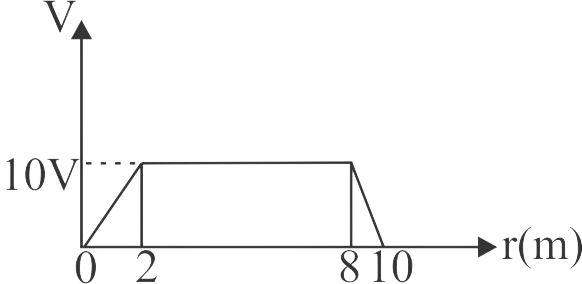359563 An electric field is expressed as \(\overrightarrow E = 2\widehat i + 3\widehat j\). Find the potential difference \(({V_A} - {V_B})\) between two points \(A\) and \(B\) whose position vectors are given by \({r_A} = \widehat i + 2\widehat j\) and \({r_B} = 2\widehat i + \widehat j + 3\widehat k\)
359563 An electric field is expressed as \(\overrightarrow E = 2\widehat i + 3\widehat j\). Find the potential difference \(({V_A} - {V_B})\) between two points \(A\) and \(B\) whose position vectors are given by \({r_A} = \widehat i + 2\widehat j\) and \({r_B} = 2\widehat i + \widehat j + 3\widehat k\)
359563 An electric field is expressed as \(\overrightarrow E = 2\widehat i + 3\widehat j\). Find the potential difference \(({V_A} - {V_B})\) between two points \(A\) and \(B\) whose position vectors are given by \({r_A} = \widehat i + 2\widehat j\) and \({r_B} = 2\widehat i + \widehat j + 3\widehat k\)
359563 An electric field is expressed as \(\overrightarrow E = 2\widehat i + 3\widehat j\). Find the potential difference \(({V_A} - {V_B})\) between two points \(A\) and \(B\) whose position vectors are given by \({r_A} = \widehat i + 2\widehat j\) and \({r_B} = 2\widehat i + \widehat j + 3\widehat k\)

